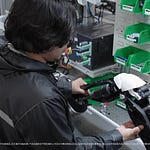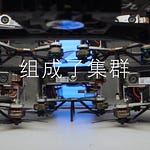What about military use of Drone Performance.
From the conflicts in Armenia and Azerbaijan to Russia and Ukraine, and the Israel-Palestine situation, drones have already changed the nature of warfare. They can open tanks and armored vehicles, kill infantry, and attack various platforms and launchers.
In terms of national strength, Ukraine is far from being Russia's match, but Ukraine can produce U-22 drones in unlimited quantities, launching attacks against Russia day and night to strike high-value targets in the Russian military. From Belgorod all the way to Moscow, there isn’t a single airport in Western Russia that is safe anymore. Large strategic bombers like the Tu-95 and Tu-160 can retreat to airfields over 600 kilometers away. However, military aircraft such as the Su-30, Su-35, Tu-22, and Il-76 have limited operational ranges and cannot retreat; they must be deployed at front-line airports to effectively strike Ukraine. Yet, the Russian air defense system cannot stop them; even if it does, the cost of intercepting missiles far exceeds that of the drones.
One relatively good solution is to dig tunnels and hide the aircraft in caves or build underground hangars. At this point, Russia can’t worry about its image; it must hide as needed. From the Ukrainian army's previous attacks, Russian planes have been parked on open-air runways, becoming live targets for Ukrainian drones. The Russia-Ukraine war has elevated drones to the altar of modern warfare, becoming powerful tools for small countries to confront larger ones. Next, it will be interesting to see how major powers develop anti-drone tools.
Imagine this: once the "swarm" drone system is deployed en masse on the battlefield, it could truly have an effect similar to a "dimensionality reduction strike" on the existing forms of warfare, just like in science fiction movies. Take the current Russia-Ukraine battlefield, which is regressing to World War II levels. If one side could utilize such weapons, they could completely detect and destroy significant targets within a 200-kilometer radius, such as tanks, armored vehicles, trucks, artillery, ammunition depots, command posts, and troop and supply concentrations, using a "saturation" of "swarm" drones.
While it may sound exaggerated, drones could potentially change the course of the Russia-Ukraine conflict. If one side could use this weapon in large quantities, it could significantly accelerate the pace of the war, possibly achieving decisive victories within just a few weeks. From a certain perspective, this exemplifies the "fast-paced strikes" characteristic of modern and future warfare. In short, China's military industry has never paused in its efforts to explore the forms of future warfare, and the new wave of global military technology development may very well be led by China.
Working Principle
One aspect is the signal transmission for control networks. Using IPv6 shouldn't pose a problem, but there are definitely issues with network transmission. Concentrating a million signal terminals in one area creates significant interference and noise, akin to the weak mobile signals experienced at concerts and crowded tourist spots.
The other aspect is the computational demands of control. For such a large number of drones, flight attitude control must be real-time. If simultaneous takeoff and landing are not required, it might be manageable to launch in batches, but coordinating simultaneous actions becomes challenging. It's akin to planning the positions and distances of a million drones while handling a massive amount of calculations. For large systems, this shouldn't be a major issue, but it's a dynamic programming challenge; the state from one second to the next can be completely different and may have cascading effects, potentially leading to chain reactions that could result in multiple drone failures.
Moreover, when combined with the issue of signal transmission delays, this could become extremely serious. If a signal delay exceeds a certain threshold, it could trigger a chain reaction.
Technical Challenges of Drone Performance
With so many drones in the air, how can they possibly avoid collisions? This is a key challenge in flight control, requiring advance route planning. Each drone's flight path must be planned and calculated on the ground to ensure there are no intersections, which could lead to collisions. The ground serves as the control center, functioning as both the computing and communication system. Communication between the ground and the drones can occur via radio or through 4G or 5G signals. Compared to radio, 4G or 5G signals offer wider bandwidth, allowing for extensive communication. Large-scale drone performances may face the following issues:
Positioning System: This is critical. It needs to be highly accurate. If there are issues with the system, such as losing GPS signals, the drones may struggle to maintain their formation. The more drones involved, the higher the probability of problems occurring.
Communication System: A large number of drones must communicate with each other to know where each drone is flying, how to plan their trajectories, and their current positions. If the communication signal is interrupted, the drones will be unable to determine their locations.
Issues with the Drones Themselves: For instance, if a drone lacks sufficient power, it may not be able to fly or control its orientation, causing it to drift off course.
Decentralized Cluster Formation refers to clusters that are not constrained by geographic boundaries, commonly applied in scenarios such as swarm formation, multi-machine collaboration, and university research. Previous studies have utilized lights on drones or specific optical markers to achieve a partially distributed external positioning system; however, this often required significant modifications to the drones and lacked flexibility. For example, it relied on specific host devices, or the cluster had to fly at certain angles to maintain observation; or it depended on GPS, which posed challenges for large-distance formations outdoors. In complex GPS environments, such as narrow urban streets or indoor settings, normal flight was not feasible. The LinkTrack UWB ranging and positioning system provides each mobile carrier with ranging information accurate to within 10 cm and two-way communication capabilities. Combined with other sensor solutions, this allows decentralized cluster formations to be successfully applied in various scenarios.
The decentralized cluster formation utilizes the DR Mode local positioning mode within LinkTrack. The specific working principle is as follows:
Advantages of the Solution
Distributed Ranging: Points measure distances between each other with an accuracy of up to 10 cm and a refresh rate of up to 200 Hz. Each node outputs its high-precision distance, signal strength, ID, and other information to other nodes via UART/USB interfaces.
Distributed Communication: While supporting distributed ranging, the same communication interface also allows for arbitrary data transmission (two-way) between any points.
Dynamic Capacity Mechanism: To accommodate unlimited capacity scenarios, a dynamic capacity mechanism is introduced (optional). When the number of nodes within a communication range of a single node increases, the system will automatically reduce the effective measurement data quantity to other nodes, thus allowing more nodes to be supported and enabling continuous expansion of system capacity.
ドローンの性能の軍事利用についてどうでしょうか。
アルメニアとアゼルバイジャンの紛争からロシアとウクライナ、そしてイスラエルとパレスチナの状況に至るまで、ドローンはすでに戦争の性質を変えています。彼らは戦車や装甲車を攻撃し、歩兵を殺し、さまざまなプラットフォームや発射装置を攻撃することができます。
国力の観点から、ウクライナはロシアの対抗馬ではありませんが、ウクライナは無制限にU-22ドローンを生産し、昼夜を問わずロシアに攻撃を仕掛け、高価値の軍事目標を攻撃することができます。ベルゴロドからモスクワまで、西ロシアの空港は安全な場所が一つもありません。Tu-95やTu-160のような大型戦略爆撃機は、600キロメートル以上離れた空港に退避することができます。しかし、Su-30、Su-35、Tu-22、Il-76のような軍用機は運用範囲が限られており、退避できません。効果的にウクライナを攻撃するには、前線の空港に配備する必要があります。しかし、ロシアの防空システムはそれらを止めることができず、たとえ止めたとしても、ミサイルを迎撃するコストはドローンのコストをはるかに上回ります。
比較的良い解決策の一つは、トンネルを掘って航空機を洞窟に隠すか、地下格納庫を建設することです。この時点で、ロシアは自国のイメージを気にすることはできません。必要に応じて隠れなければなりません。ウクライナ軍のこれまでの攻撃から、ロシアの航空機は野外の滑走路に停められ、ウクライナのドローンにとって生きた標的となっています。ロシア-ウクライナ戦争は、ドローンを現代戦の祭壇に引き上げ、小国が大国に対抗するための強力なツールとなりました。次に、主要国がどのように対ドローンツールを開発するかが興味深いでしょう。
想像してみてください。いったん「スワーム」ドローンシステムが戦場に大量投入されれば、既存の戦争形態に対して「次元削減攻撃」のような効果を持つことができるかもしれません。現在のロシア-ウクライナの戦場は、第二次世界大戦のレベルに後退しています。もし一方がこのような武器を利用できれば、200キロメートルの半径内の重要な目標、すなわち戦車、装甲車、トラック、砲兵、弾薬庫、指揮所、部隊や物資の集中地を「スワーム」ドローンの「飽和攻撃」により、完全に発見して破壊することができるでしょう。
誇張しているように聞こえるかもしれませんが、ドローンはロシア-ウクライナ紛争の進行を変える可能性があります。一方がこの武器を大量に使用できれば、戦争のペースを大幅に加速させ、数週間以内に決定的な勝利を達成することも可能です。ある観点から見れば、これは現代戦と未来戦の「速いペースの攻撃」を示すものです。要するに、中国の軍需産業は未来の戦争形態を探求する努力を一瞬たりとも休めたことはなく、新たな世界的な軍事技術の発展の波は、中国が主導する可能性が高いです。
動作原理
一つの側面は、制御ネットワークの信号伝送です。IPv6を使用することに問題はないはずですが、ネットワーク伝送には確実に問題があります。100万の信号端末を1つのエリアに集中させると、コンサートや混雑した観光地での弱いモバイル信号と同様に、重大な干渉やノイズが発生します。
もう一つの側面は、制御の計算要求です。このように大量のドローンの場合、飛行姿勢制御はリアルタイムで行わなければなりません。もし同時の離陸と着陸が必要ない場合は、バッチでの発進が可能かもしれませんが、同時に動作を調整するのは困難になります。これは、100万のドローンの位置と距離を計画しながら、大量の計算を処理することに似ています。大規模なシステムにとっては、大きな問題ではないはずですが、動的プログラミングの課題です。前の秒と次の秒の状態が完全に異なる場合があり、連鎖的な影響を及ぼし、複数のドローンの故障を引き起こす可能性があります。
さらに、信号伝送の遅延の問題と組み合わさると、非常に深刻な事態になる可能性があります。信号の遅延がある閾値を超えると、連鎖反応を引き起こす可能性があります。
ドローン性能の技術的課題
空中にこれほど多くのドローンがある中で、どうやって衝突を避けることができるのでしょうか?これは飛行制御における重要な課題であり、事前のルート計画が必要です。各ドローンの飛行経路は地上で計画され、計算されなければならず、交差がないことを保証する必要があります。交差があると衝突の原因となります。地上は制御センターとして機能し、計算システムと通信システムの両方の役割を果たします。地上とドローン間の通信は、無線または4Gまたは5G信号を通じて行うことができます。無線と比較して、4Gまたは5G信号はより広い帯域幅を提供し、広範な通信を可能にします。大規模なドローンのパフォーマンスは、次のような問題に直面する可能性があります:
位置決定システム:これは重要です。非常に高い精度が必要です。GPS信号を失うなどのシステムに問題が発生した場合、ドローンは編隊を維持するのに苦労するかもしれません。ドローンの数が多いほど、問題が発生する確率が高くなります。
通信システム:多数のドローンが互いに通信する必要があり、各ドローンがどこを飛んでいるか、どのように軌道を計画するか、現在の位置を把握する必要があります。通信信号が中断された場合、ドローンは自分の位置を特定できなくなります。
ドローンそのものの問題:例えば、ドローンに十分なパワーがない場合、飛行できなくなったり、姿勢を制御できなくなったりして、コースを逸脱する可能性があります。
分散型クラスター形成
分散型クラスター形成とは、地理的境界に制約されないクラスターのことで、スワーム形成やマルチマシン協力、大学の研究などのシナリオで一般的に適用されます。従来の研究では、ドローンのライトや特定の光学マーカーを使用して部分的に分散した外部位置決定システムを実現してきましたが、これにはドローンへの大規模な改造が必要であり、柔軟性に欠けることが多かったです。例えば、特定のホストデバイスに依存したり、クラスターが観測を維持するために特定の角度で飛行する必要があったり、GPSに依存して大距離形成に課題があったりしました。狭い都市の通りや屋内など、複雑なGPS環境では、通常の飛行が不可能でした。LinkTrackのUWB距離測定および位置決定システムは、各移動キャリアに対して10cm以内の精度で距離情報を提供し、双方向通信機能を持っています。他のセンサーソリューションと組み合わせることで、分散型クラスター形成がさまざまなシナリオで成功裏に適用されることが可能になります。
分散型クラスター形成は、LinkTrack内のDRモードのローカル位置決定モードを利用しています。具体的な動作原理は次のとおりです。
ソリューションの利点
分散距離測定:各点が互いに10cmの精度で距離を測定し、最大200Hzの更新率を持ちます。各ノードは、UART/USBインターフェースを介して他のノードに高精度の距離、信号強度、ID、その他の情報を出力します。
分散通信:分散距離測定をサポートしながら、同じ通信インターフェースは任意の点間でのデータ伝送(双方向)を可能にします。
動的容量メカニズム:無制限の容量シナリオに対応するために、動的容量メカニズムが導入されています(オプション)。単一ノードの通信範囲内のノード数が増加すると、システムは他のノードへの有効な測定データ量を自動的に減少させ、より多くのノードをサポートし、システム容量の継続的な拡張を可能にします。










